Ever had one of those fishing trips where the fish just aren’t biting, no matter how much patience and effort you pour into it? Trust me, I’ve shared that same vexation. However, after countless minutes spent researching and many dawn-to-dusk excursions later, I’ve discovered that appreciating the science behind fishing can significantly boost your luck.
This article is ready to unpack 15 crucial tips to take advantage of this wisdom for ultimate angling prowess. So buckle up for some earnest “reel” talk!
Key Takeaways
- Jig fishing is a technique that uses a jig lure to imitate the movement of prey and attract fish.
- To maximize success, choose the right jig for the conditions, vary retrieval speed, and experiment with different fishing techniques.
- Setting up the jig properly is important – consider factors like choosing the right size and color, attaching a trailer, adjusting weight, setting up your rod and reel correctly, and tying a secure knot.
- Having essential gear like rods and reels with good sensitivity and strength, choosing the right line based on strength and visibility, using versatile jigs in different ways like flipping or swimming them through water columns, using trailers wisely for attracting more fish bites, organizing terminal tackle effectively for easy access can greatly improve your chances of jig fishing success.
What is Jig Fishing?
Jig fishing is a technique used by anglers to entice fish to bite using a jig lure, which is a type of fishing bait that imitates the movement of prey.
Benefits of Jig Fishing
Jig fishing holds many perks. You can use jigs in many ways. This makes them great tools for different fishing tricks. With a jig, you have full control over your bait’s path and pose.
Such skill lets you fool the fish into thinking it is real prey. Jigs often look like real food to the fish, making them better at catching gamefish like walleye or bass. You get to pick from all kinds of sizes, forms and hues based on what suits your needs best and what kind of water you are going into.
Different styles can make it easier for you to adapt to new fishing spots or needs fast!
History and Evolution of Jig Fishing
Jig fishing has an old and rich history. This makes it a key part of the fisher’s toolbox. It started with simple hand-crafted gear, made of bones or shells tied to lines many years ago.
Over time, metal took the place of bone and shell. Fishers began forming these metals into shapes that looked like small baitfish or critters. These are what we now call ‘jigs’. This new look made jigs better at fooling fish into biting! Today, jigs are high tech tools but still stay true to their roots from long ago.
They remain the choice for big money wins in top fishing tournaments across the world, just as they have done for many generations before us!
Tips and Techniques for Jig Fishing Success
Maximize your success with jig fishing by setting up your jig properly, choosing the right jig for the conditions, and using effective fishing techniques.
Maximize your success with jig fishing
To make your jig fishing fun and successful, you need to be smart. The right jig is key to this fun game. It can help attract more fish, as they love jerky, up-and-down movements in the water.
This is where a good jig comes in! You also have to hone your skills with the rod tip. Move it up and down at a good pace. Not too fast, not too slow. This way, you will draw many fish and catch them easily!
Enhancing your chances of catching fish
To enhance your chances of catching fish while jig fishing, it’s important to master some key techniques. Varying your retrieval speed and experimenting with different fishing techniques can attract fish to the jig.
By imitating different types of prey through hopping, dragging, swimming, or snapping the jig, you can increase your chances of enticing fish to bite. Avoid common mistakes that novice anglers make when jigging, such as failing to make the jig behave like a tempting meal.
Choosing the right type of jig for the specific fish species you’re targeting will also greatly improve your success rate. Lastly, shaking your rod tip while reeling can be an effective technique for catching largemouth bass with a jig.
Setting up a jig
Setting up a jig is an important step in successful fishing. Here are some key factors to consider:
- Choose the right jig: Select a jig that matches the size and color of the prey fish in the area you’re fishing. This will increase your chances of attracting bites.
- Attach a trailer: Adding a soft plastic trailer to your jig can make it more enticing to fish. Choose a trailer that mimics the movements of baitfish or other food sources.
- Adjust weight: The weight of your jig will affect how it sinks and moves through the water. Use lighter weights for shallow water and heavier weights for deeper areas.
- Set up your rod and reel: Make sure your rod and reel are appropriately matched to handle the weight of the jig you’re using. This will ensure smooth casting and better control over your presentation.
- Tie a secure knot: Use a strong knot, such as an improved clinch knot, to attach your line to the jig. This will prevent break-offs and help you maintain a good connection with any hooked fish.
Choosing the right jig
Choosing the right jig is an important part of successful fishing. When selecting a jig, consider factors like color, head shape, weight, and size. The color of the jig should match the water conditions and mimic the prey that fish are feeding on.
The head shape determines how the jig moves in the water, so choose one that suits your desired fishing technique. Jig weight should be chosen based on the depth of the water you’re fishing in.
Lastly, consider the size of the jig to match it with your target species and their feeding habits. With these considerations in mind, you’ll increase your chances of catching more fish when using jigs for fishing success!
Fishing techniques
I love exploring different fishing techniques to improve my skills and catch more fish. When it comes to jig fishing, there are several techniques that can help you succeed. Here are some important fishing techniques for jig fishing:
- Hopping: Make your jig hop off the bottom by lifting your rod tip and then letting it drop. This action mimics a baitfish or prey moving in the water.
- Dragging: Slowly drag your jig along the bottom, imitating a crawfish or other bottom-dwelling creatures. This technique can entice fish to strike.
- Swimming: Move your jig through the water column with a steady retrieve, simulating a swimming baitfish. This works well when fish are actively feeding in open water.
- Snapping: Give your rod tip quick upward jerks to make the jig dart and snap through the water, attracting attention from nearby fish.
Weight considerations
Choosing the right weight for your jig is really important when you’re fishing. The size of the weight can affect how well your jig works and if you catch any fish. When you’re using Texas rigs or jigs, it’s crucial to choose the right size weight.
If you’re fishing in deeper water, you’ll need a heavier jig so that it can reach the bottom. It’s also important to think about tides and currents when deciding on the weight of your jig.
And don’t forget, the depth of the water will determine what weight is best for your situation. So make sure to consider all these factors when selecting your jig weight for a successful day of fishing!
Essential Gear for Jig Fishing
When it comes to jig fishing, having the right gear is essential for a successful outing. From rods and reels to lines and terminal tackle, here are some key items you need to have in your arsenal.
Rods and Reels
Choosing the right rods and reels is essential for successful jig fishing. When it comes to rods, you’ll want one that has a good balance of sensitivity and strength. Look for a medium-heavy or heavy-action rod with a fast or extra-fast tip.
This will allow you to feel subtle bites while still having enough power to handle big fish. As for reels, baitcasting reels are popular among jig fishermen because they offer better accuracy and control.
However, if you’re more comfortable with spinning reels, they can work just fine too. Just make sure your reel has a smooth drag system and can hold enough line for the size of jigs you’ll be using.
Lines
Let’s talk about lines in jig fishing. Lines are an essential gear that you need to have for a successful jig fishing experience. When it comes to fishing lines, there are different types to choose from, but the article doesn’t mention which type or brand is best for jig fishing.
Choosing the right line can make a difference in your success rate, so it’s important to consider factors like strength and visibility. Additionally, using the right technique and properly setting up your line can enhance your chances of catching fish.
Remember to practice and experiment with different techniques until you find what works best for you. With the right line and techniques, you’ll be well on your way to mastering jig fishing!
Jigs
I love using jigs when I go fishing because they’re so versatile and effective. Jigs are considered one of the best baits for bass anglers, but they can be used to catch other species too.
They come in different types like flipping jigs, swim jigs, casting jigs, and bass jigs. The design of a jig is important – factors like drop speed, head design, color, patterns, shapes, hook styles, and eyelets all play a role in attracting fish.
You can use jigs in different ways – flipping them into cover or structure, hopping them along the bottom, swimming them through the water column – there are so many options! And it’s not just shallow water fishing where jigs shine; you can also use them for deep water jigging.
Trailers
Trailers are a really important part of jig fishing. In fact, they might be even more important than the jig itself! There are different types of trailers you can use, like chunks and craws.
When you’re using a swim jig, it’s good to have a reliable bait-holder so that your trailer stays in place. And here’s an awesome tip: using different color combinations for your trailers can help attract more bass.
That’s because the trailers are what actually trigger strikes when you’re jig fishing. So make sure to choose and use them wisely!
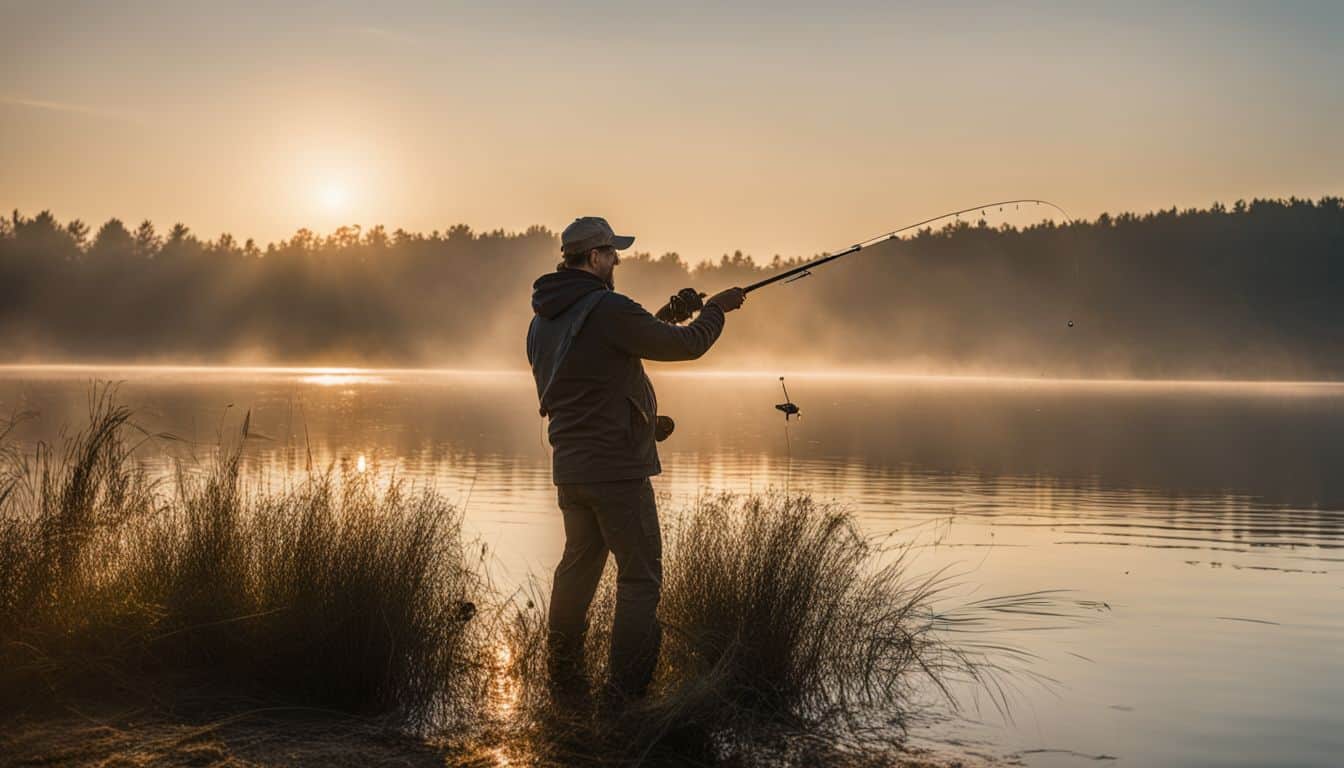
Terminal Tackle
Terminal tackle is an important part of jig fishing. It includes all the gear you need to hook and land fish or make your lures look enticing. This can include things like hooks, fishing line, sinkers or weights, swivels and snaps, and even your fishing rod.
Terminal tackle is crucial for achieving success in jig fishing because it helps you present your bait effectively and gives you the tools to reel in your catch. It’s important to keep your terminal tackle organized and easily accessible so that you can quickly find what you need when you’re out on the water.
Electronics
Good electronics are essential for jig fishing. They help us find fish and improve our chances of catching them. With sonar technology and fish finders, we can see where the fish are hiding underwater.
These devices provide valuable information about the depth at which the fish are located, helping us target them effectively. By using electronics, we can increase our fishing success rate and make the most out of our jig fishing experience.
So, don’t forget to bring your electronics when you go jig fishing!
Variety of Species That Can be Caught with Jig Fishing
Jig fishing is not limited to just one species; it can be used to catch a variety of fish. From largemouth bass to walleye, northern pike to trout, jig fishing has proven successful in targeting various types of fish.
Discover the versatility and effectiveness of jig fishing for different species by reading more.
Largemouth Bass
Largemouth bass are a popular fish species that can be found in freshwater lakes, rivers, and streams all across North America. They have distinctive large mouths that allow them to eat prey that is almost half their size.
Many anglers love fishing for largemouth bass because they put up a good fight and can be quite challenging to catch. When jig fishing, you have a great chance of catching largemouth bass by using different colors and sizes of jigs.
So if you’re looking for an exciting fishing experience, try your luck at jig fishing for some amazing largemouth bass!
Walleye
Walleye is a type of fish that is native to Ontario. You can find them in lakes, rivers, and reservoirs. One popular fishing technique for catching walleye is called jigging. It involves using a jig, which is a type of bait that mimics the movement of prey in the water.
Walleye are sought after by anglers because they have slender bodies and sharp teeth. So if you want to catch some walleye, give jig fishing a try!
Northern Pike
Northern Pike, also known as Pike, Snake, or Gator Fish, are a popular species among anglers. They are voracious eaters and play an important role as predator fish in many water bodies.
Northern Pike can grow to over 50 pounds in weight and are commonly found in weedy areas of lakes and rivers. When jig fishing for Northern Pike, it’s important to choose the right jig and use techniques that mimic their natural prey.
Keep in mind that they prefer deeper waters and areas with vegetation. So if you want to catch these impressive fish, make sure to target those weedy spots!
Trout
Trout are a diverse group of fish that come in different species, each with its own unique traits. They can vary in coloration depending on their habitat and specific species. Some common types of trout include brown trout and sea trout.
Brown trout are particularly challenging to catch because they originally came from Europe. However, with the right jig fishing techniques, you have a chance to reel them in successfully.
By understanding the genetic and evolutionary traits of different trout species, you can enhance your fishing skills and increase your chances of catching these elusive fish.
Mastering Jig Fishing Skills
To truly master jig fishing, it’s important to get hooked on the technique and practice your skills regularly, using spinning reels for optimal results and keeping your bait deep in the water.
Get hooked on jig fishing
I love jig fishing! It’s a great way to catch fish and have fun. There are many different techniques you can use to master jig fishing. You can practice your skills and improve over time.
One tip is to spin the reel right with spinning reels, it helps control the line better. Another tip is to keep your jig deep in the water, as that’s where many fish like to hang out.
So if you’re looking for an exciting and effective way to catch fish, give jig fishing a try – you won’t be disappointed!
Practice makes perfect
When it comes to mastering jig fishing skills, practice is key. The latest science tells us that practicing regularly can actually help us get better and better at fishing. It’s not just about luck or natural talent – it’s about putting in the time and effort to improve our skills.
The more we practice, the more efficient and effective we become in our fishing techniques. Practice helps develop muscle memory and refines our technique over time. So, if you want to become a master at jig fishing, don’t underestimate the power of practice! Put in the hours on the water, learn from your experiences, and keep persevering until you reach a level of mastery that you’re proud of.
Spin it right with spinning reels
Spinning reels are a great choice for jig fishing. They have an open-faced design with a bail and line guide.
- Use smaller baits: Spinning reels work best with downsized baits. This allows for better control and accuracy when casting.
- Match your line: When using spinning reels, it’s important to choose the right line. Smaller baits should be paired with lighter lines for optimal performance.
- Consider braided line: Braided line, like SpiderWire, is a popular choice for jig fishing with spinning reels. It offers excellent strength and sensitivity.
- Practice casting accuracy: With spinning gear, you can improve your casting accuracy by practicing different techniques. Experiment with your casting motion and adjust as needed.
Keeping it deep
When it comes to mastering jig fishing, keeping it deep is an essential skill. Deepwater fishing requires different techniques compared to shallow water fishing. Instead of using pitching and flipping techniques that cover a small area, focus on deep jigging tactics.
These tactics involve casting your line into deeper areas and then lifting and dropping the jig off the bottom to tempt fish below. It’s important to pay attention to subtle signs of fish activity, such as ripples or disturbances in the water, which can indicate where the fish are hiding.
By honing your observational skills and using jigs as a universal bait, you’ll increase your chances of success in various fishing situations, especially when targeting species like largemouth bass that love thick cover.
Finding The Best Spots For Jig Fishing
To find the best spots for jig fishing, explore local lakes and ponds, rivers and streams, coastal areas, as well as seek guidance from experienced fishing charters and guides or join online fishing communities and forums.
Local lakes and ponds
I love fishing in local lakes and ponds because they offer great opportunities for jig fishing. These smaller bodies of water are often filled with sunfish, making them ideal for practicing your jigging skills.
When fishing in lakes and ponds, it’s important to understand the structure and contours of the water. Bass fishing, in particular, requires knowledge of changing patterns and depths related to seasonal fish migrations.
If you’re looking for specific information on local lakes and ponds, you can check out Iowa’s fishing report. It provides updates on the best hot spots and latest news about fishing opportunities in the area.
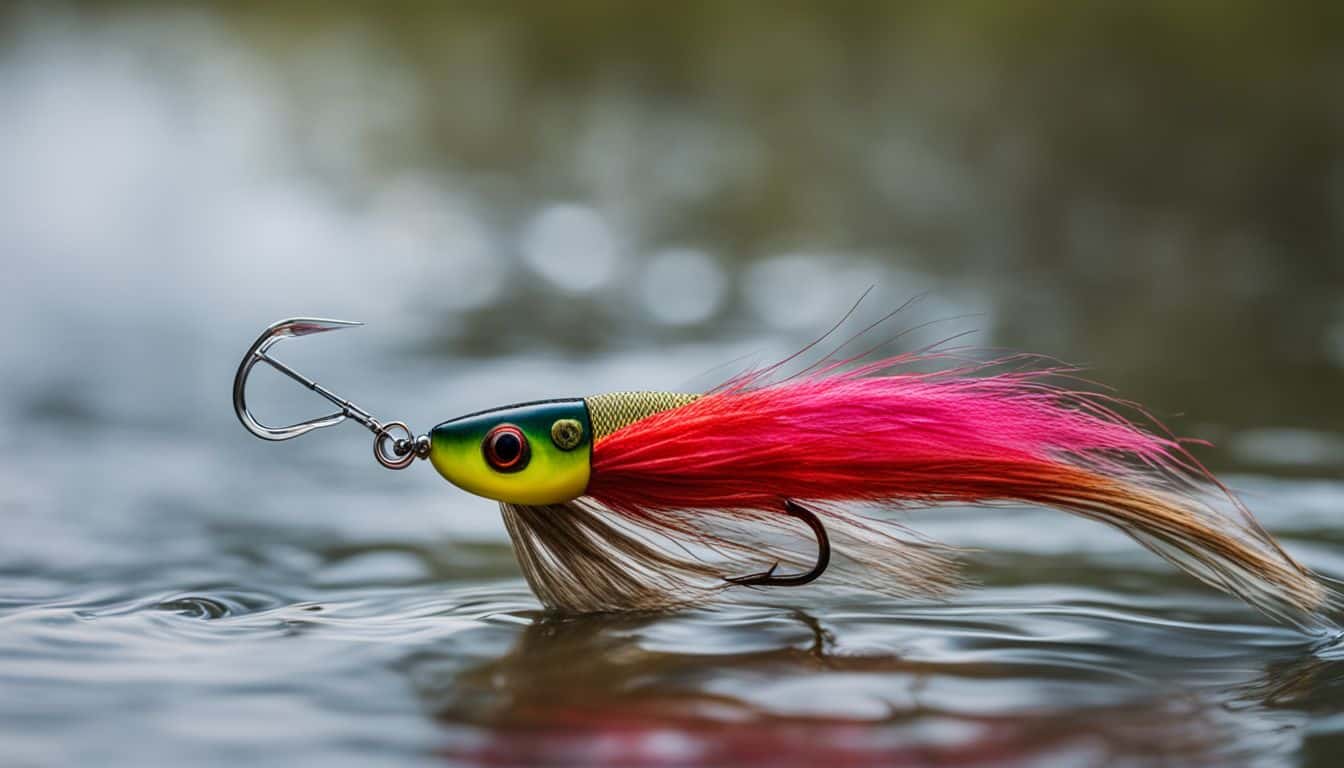
Rivers and streams
Rivers and streams are exciting places to go fishing. The moving water in rivers and streams presents different challenges compared to still waters like lakes and ponds. It’s important to understand that the health of these aquatic ecosystems is crucial for the abundance of fish and wildlife species.
When looking for fishing spots, pay attention to riverbanks, inlets where rivers or streams enter a lake or pond, trout streams, river channels, and confluences where two rivers meet.
Different species of fish prefer different types of rivers and streams, so it’s important to do your research and learn about their preferences. With the right techniques and equipment, you can have a successful fishing experience in these dynamic environments.
Coastal Areas
Coastal areas are ideal spots for jig fishing, especially in saltwater. You can find productive fishing locations near oyster beds or manmade pilings. These spots attract a variety of fish species and offer great opportunities for casting your bait into tidal currents.
Remember to avoid littered fishing areas as they usually indicate poor fishing conditions. Whether you’re fishing on the ocean shore or near a lake, there are plenty of rigs and techniques you can use to maximize your success.
So grab your gear and head to the coast for some exciting jig fishing adventures!
Fishing Charters and Guides
I love jig fishing, and one of the best ways to find the perfect spots for this technique is by hiring a fishing charter or guide. These experts know all the prime locations where you can have a successful jig fishing experience.
They have extensive knowledge about local lakes, ponds, rivers, streams, and even coastal areas where different species can be found. Fishing charters and guides can provide valuable insights on specific techniques, gear selection, and overall strategy to maximize your chances of catching more fish.
Whether you’re a beginner or an experienced angler looking for new hotspots, these professionals can help you discover hidden gems for your next jig fishing adventure. Plus, they often have access to exclusive areas that are off-limits to regular anglers.
Online Fishing Communities and Forums
I love being part of online fishing communities and forums. They are great for finding the best spots for jig fishing. These communities and forums provide valuable information, tips, and techniques for successful jig fishing.
I have learned so much from other anglers who share their experiences and knowledge. It’s like having a whole community of fellow fishermen at my fingertips, always ready to help me improve my skills and discover new fishing locations.
Plus, it’s a great way to connect with other fishing enthusiasts who share the same passion as me. Online fishing communities and forums truly enhance my jig fishing experience!
Pro Tips and Tricks for Jig Fishing Success
Maximize your chances of success by perfecting your technique, choosing the right jig for the situation, and focusing on location and presentation to entice the fish to bite.
Perfecting technique
To become a master at jig fishing, it’s all about perfecting your technique. One important tip is to vary your retrieval speed and experiment with different techniques. By doing this, you can increase your chances of attracting fish and getting more bites.
Another key aspect is the motion of the jig itself. Jigs are designed to move in a jerky, vertical motion that imitates prey and entices fish to bite. So remember, practice different techniques and focus on mastering the motion of the jig to improve your fishing success.
Choosing the right jig
Selecting the right jig is a crucial decision when it comes to jig fishing. You need to consider factors like the depth of the water, the type of cover where you’ll be fishing, and what kind of fish you’re targeting.
Different types of jigs are designed for specific techniques and fish species. For example, flipping jigs are great for fishing in heavy cover, while swim jigs work well when you want to imitate a swimming baitfish.
The design of the jig head also plays a role in its effectiveness. So take your time to choose the right jig that matches your fishing conditions and preferences.
Location and presentation
Finding the right location and mastering presentation techniques are key to success in jig fishing. It’s important to understand the structure and contours of the water you’re fishing in, as different fish species prefer different habitats.
Look for areas with rocks, vegetation, or drop-offs where fish might be hiding. When it comes to presentation, experiment with different retrieval methods to see what works best for the fish you’re targeting.
Vary your speed and depth until you find a technique that entices them to bite. Remember, practice makes perfect when it comes to mastering these skills!
Fishing Mastery on a Paddle Board
Experience the thrill of jig fishing from a whole new perspective as you explore different water environments and reap the rewards of catching fish while mastering your skills on a paddle board.
Exploring different water environments
As a fishing enthusiast, I love exploring different water environments while paddle boarding. It allows me to discover new fishing spots and try out different angling strategies. Here are some important facts to keep in mind when exploring different water environments:
- Aquatic ecosystems: Each water environment, whether it’s a lake, river, or coastal area, has its own unique ecosystem with specific fish habitats and behavior patterns.
- Fish habitats: Understanding the specific habitats where fish like to hang out is crucial for successful fishing. Look for structures like submerged rocks, fallen trees, weed beds, or deep drop-offs where fish usually gather.
- Fishing techniques: Depending on the water environment and the species you’re targeting, you may need to adjust your fishing techniques. For example, in still waters like lakes or ponds, you might use slower presentations and precise casts, while in flowing rivers or tidal areas, you may need to work with the current and adapt your bait placement accordingly.
- Water currents: Pay attention to the direction and strength of water currents as they can influence fish behavior and feeding patterns. Learning how to read currents will help you position yourself for better chances of catching fish.
- Fishing equipment: When exploring different water environments, make sure you have the appropriate fishing equipment for each situation. This includes having the right rods and reels that are suitable for the target species and the size of the body of water you’re fishing in.
- Fishing safety: Before heading out on your paddle board adventure, review important safety tips such as always wearing a life jacket and not paddling alone. Familiarize yourself with local fishing regulations and be aware of any potential hazards in the water.
Reap the rewards of jig fishing
Jig fishing is a fantastic way to reel in big fish and reap great rewards. With the right techniques and gear, you can master this versatile and challenging form of fishing. Jig fishing lures are considered some of the best in the world, making them a go-to choice for many anglers.
Whether you’re targeting bass, walleye, pike, or trout, jig fishing allows you to showcase your skills and catch impressive fish. So grab your rod, set up your jig properly, and get ready to experience the excitement and satisfaction that come with successful jig fishing on a paddle board or any other type of watercraft!
Conclusion on The Science Behind Fishing
In conclusion, mastering the art and science of fishing is a lifelong journey that requires knowledge, skill, and patience. By understanding the fish species, their habits, and the techniques used in jig fishing, you can greatly enhance your chances of success on the water.
With the right gear and equipment, as well as a willingness to learn and adapt, you can unlock the secrets of fishing mastery. So grab your rods and reels, head out to your favorite fishing spot, and unleash your skills with jig fishing!
Unleash your skills with jig fishing
Jig fishing is an amazing way to improve your fishing skills and catch more fish. With the right techniques and gear, you can become a master at jig fishing. By experimenting with different retrieval speeds and fishing techniques, you can attract fish like never before.
Jigs are designed to imitate prey and are made up of a lead sinker with a molded hook covered by a soft body bait. This combination attracts fish and increases your chances of success.
So don’t wait any longer – unleash your skills with jig fishing and enjoy the thrill of landing more fish!
FAQs on The Science Behind Fishing
1. What are some essential tips for mastering the science behind fishing?
Some essential tips for mastering the science behind fishing include understanding fish behavior, studying different fishing techniques, practicing casting accuracy, using appropriate bait and lures, and learning to identify fishing spots.
2. How can I improve my casting accuracy in fishing?
You can improve your casting accuracy in fishing by practicing your casting technique regularly, focusing on your target, adjusting your grip and stance as needed, and paying attention to wind conditions.
3. Is it important to understand fish behavior when fishing?
Yes, understanding fish behavior is important when fishing because it helps you determine where to find fish, what bait or lure they may be interested in, and how they are likely to respond to different environmental factors.
4. What kind of bait or lures should I use for successful fishing?
The type of bait or lures you should use for successful fishing depends on the species of fish you’re targeting. Researching their eating habits and preferences can help you choose the most effective bait or lure for attracting them.
5. How do I identify good spots for fishing?
To identify good spots for fishing, look for areas with features that attract fish such as rocks, submerged structures like fallen trees or weed beds; observe water currents or changes in depth; consider time of day and weather conditions; ask local anglers or seek advice from experienced fishermen in your area.

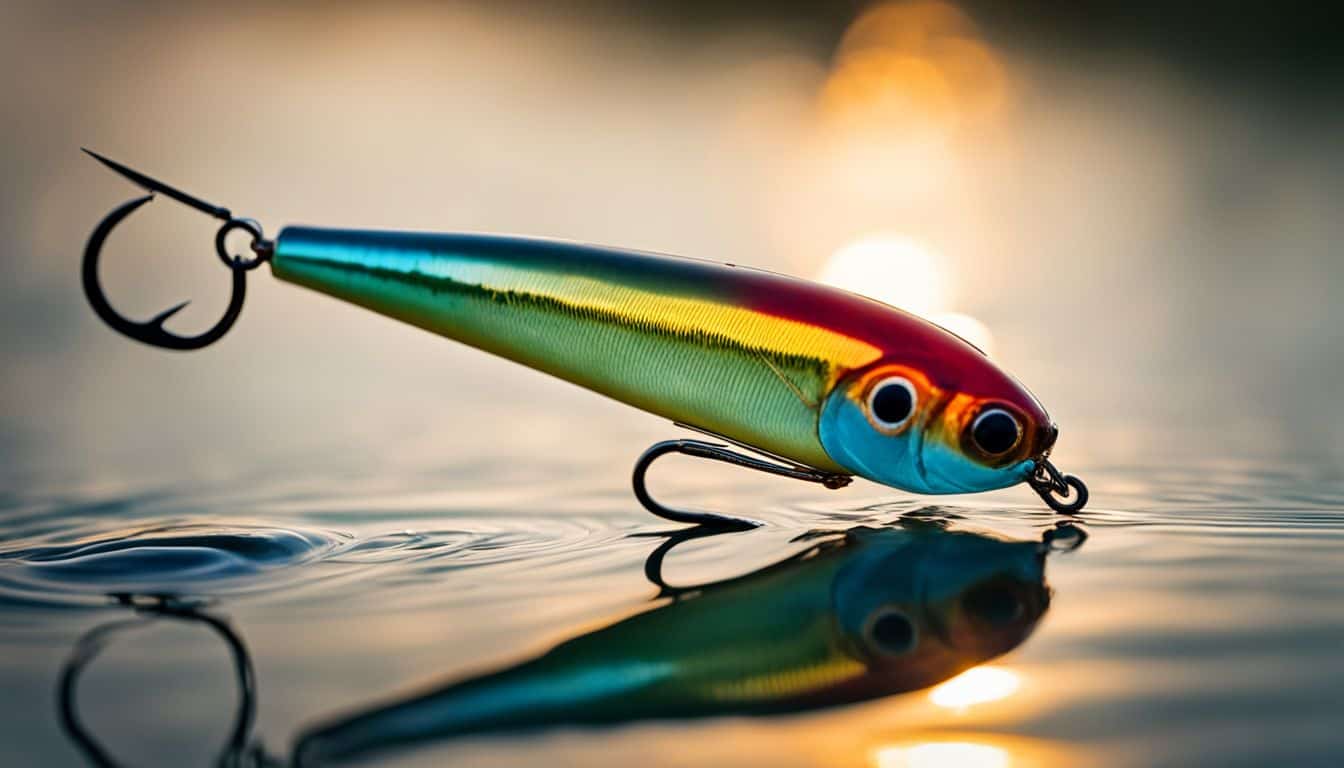
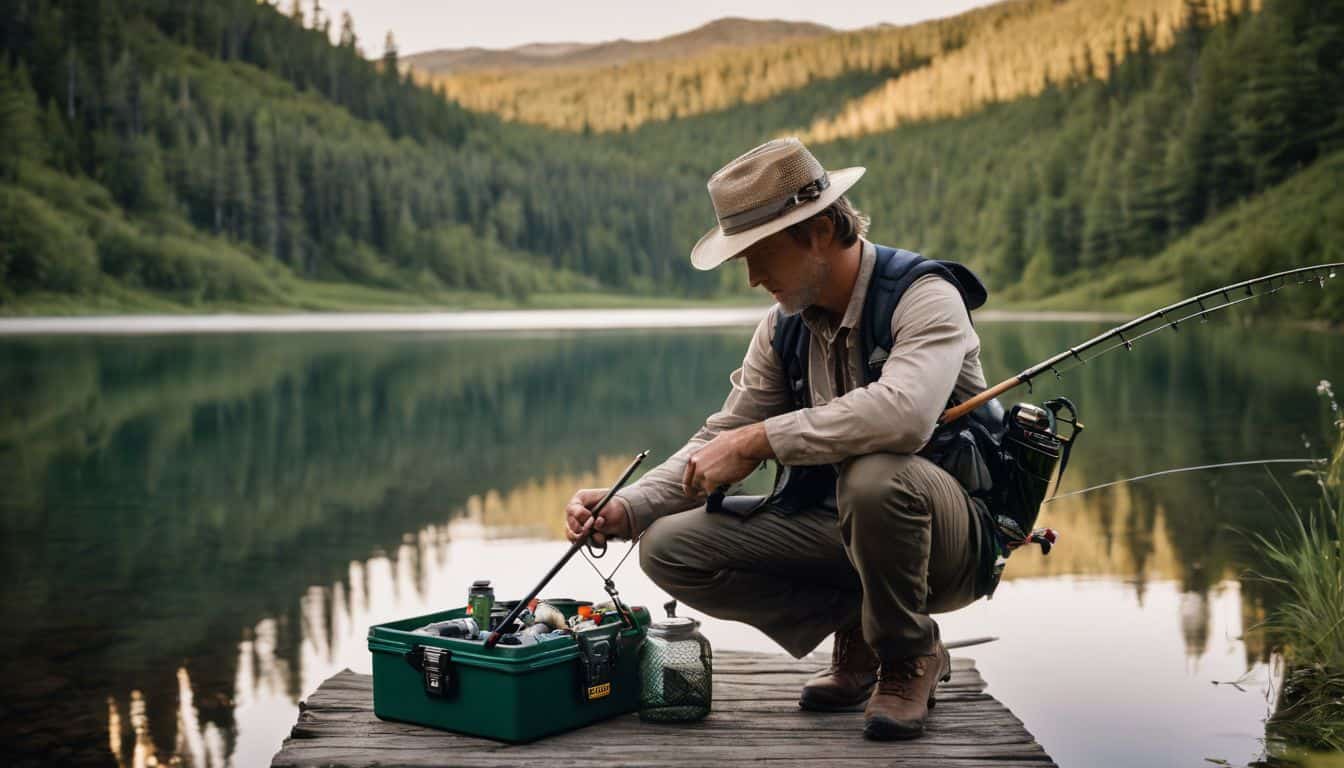
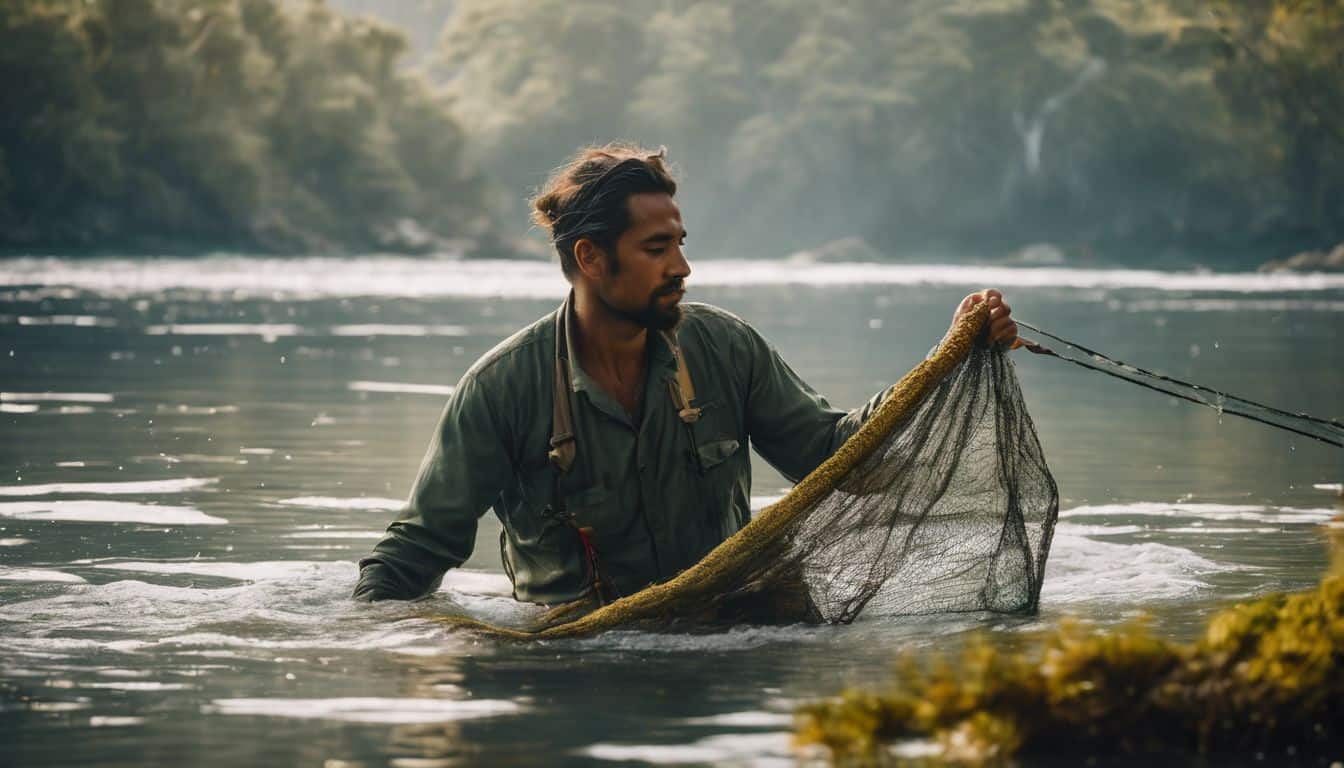
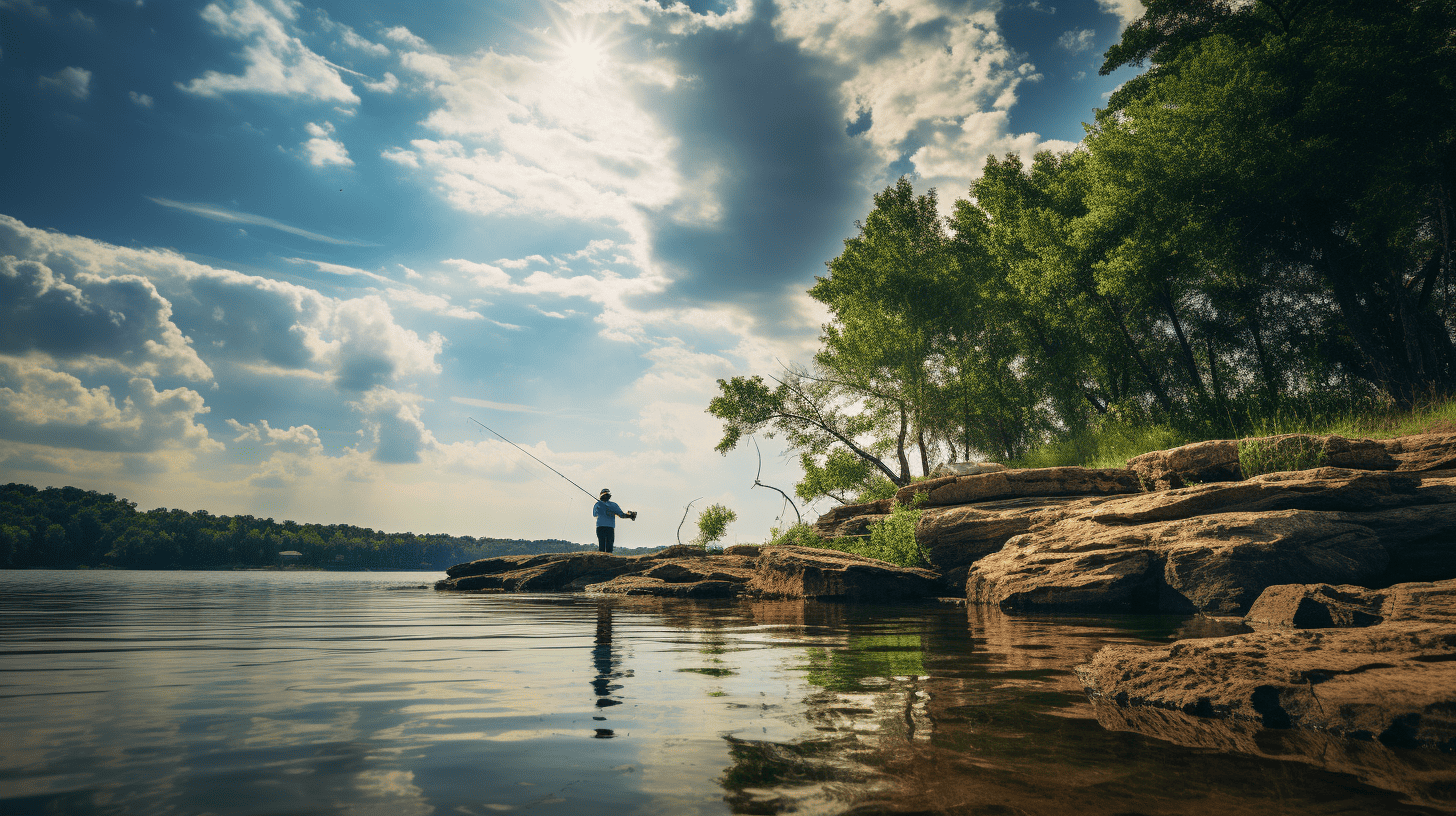
Leave a Reply